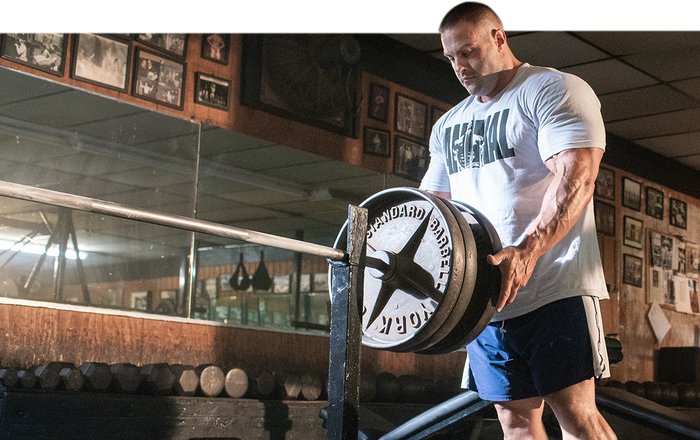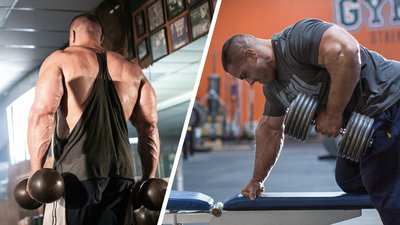Working out is fun when you're a beginner. Before long, though, working out evolves into training, and training is not fun. In fact, done correctly, training is hard and uncomfortable and about as entertaining as getting kicked in the nuts.
Sounds like back day, right? On this day of the week, you spend a lot of time bent over, the weight is heavy, the nervous system impact is high, and it takes a good bit of time to hit everything adequately. Plus, odds are you've also got some lower back pain, you're not crazy about compound movements, and you don't have enough time for a proper back session anyway. Circuit training on back machines isn't going to cut it, so get that notion out of your head.
Like it or not, what it comes down to is that you're just going to have to make peace with compound movements and get your ass in gear.
Look to Supersets for a Big Back Day
First, let's consider the three most-effective movements for back development: deadlifts, barbell rows, and chins. How can you do them in a way that is both safe and effective? The answer is to use supersets to switch on the target muscle group by performing a stabilized movement prior to each of these big compound exercises.
When you're deciding what stabilizing movement to perform, be sure to choose exercises you really connect with. Training is highly neurological, and when you aren't able to fire the proper muscles during a movement, you reduce your ability to adequately develop those muscles. But by using familiar exercises to "switch on" the relevant muscles, you're infinitely more likely to establish a strong mind-muscle connection during the movement that follows.
Notice in the video how I do cable rows before barbell rows, dumbbell rows before deadlifts, and pull-overs before pull-ups. These primary movements allow me to connect with and turn on the target muscles. They also give me a chance to stabilize and preserve my lower back for the compound movements that come next.

Don't Let Your Ego Choose Your Weights
Second, keep in mind that you should lower the weight as you move from primary to compound movements. That's important for two reasons: You'll already have had some wind taken out of your sails by the primary movement in the superset, and moving less weight will help you focus on the mind-muscle connection as you perform the compound movement.

In some cases, slowing down the negative portion of the movement will help immensely. When I do deadlifts, I tend to use too much lower body and not connect well in the movement with my back. By going very slowly on the negative of the deadlift, I'm able to generate an intense sensation in my traps, rhomboids, and lats. And I can do it without beating up my lower back or letting my lower body do all the work.
When I lower the weight, I lower it a lot. A weight of 225 pounds is hardly a heavy deadlift, but performed after dumbbell rows and with slow negatives, the ass kicking is real. So don't be afraid to reduce the weight and give yourself a fighting chance. On the other hand, if you're grinding out 15 or more reps on the second movement, you're probably using too little weight. Anything from 6-12 reps on the second movement of the superset should be just about perfect.
Balance Intensity and Rep Ranges
Lastly, let's talk volume. When doing supersets it's easy to forget that you're not just doing single sets. Even if you were to only do 3 sets for each of the three combinations (two exercises each), that's already 18 sets right there. I wouldn't personally do any more than that, but volume depends on both your exercise intensity and your ability to recover. Generally, as your intensity increases, your need for volume decreases—provided you're taking each set as far as you can and completing the maximum number of reps. I don't recommend more than 4 rounds of each of these supersets: That's 24 sets, and that's a lot.
We all have to find a way to make the basic compound movements part of our regular routine. Often, the simple superset combination of a well-connected, stabilized movement with a difficult compound movement will result in a safer and more effective second movement. With adequate intensity, you will not only improve your results but also complete your workout in less time. More results and less time spent in the gym: That's a big win-win.

